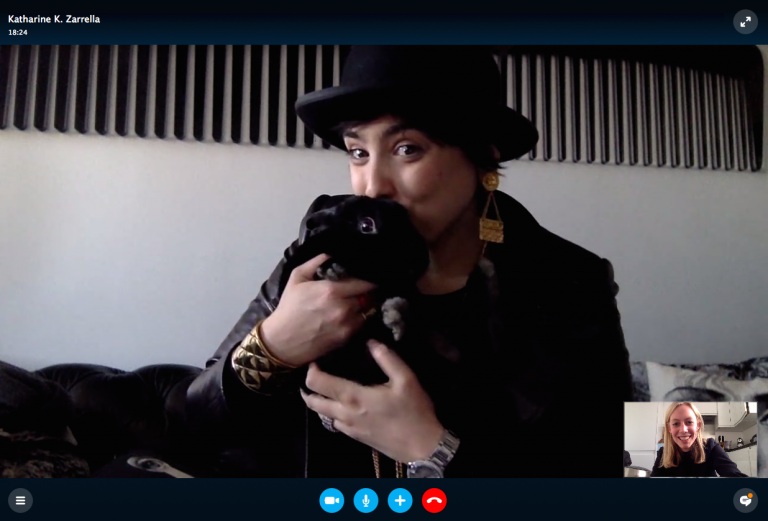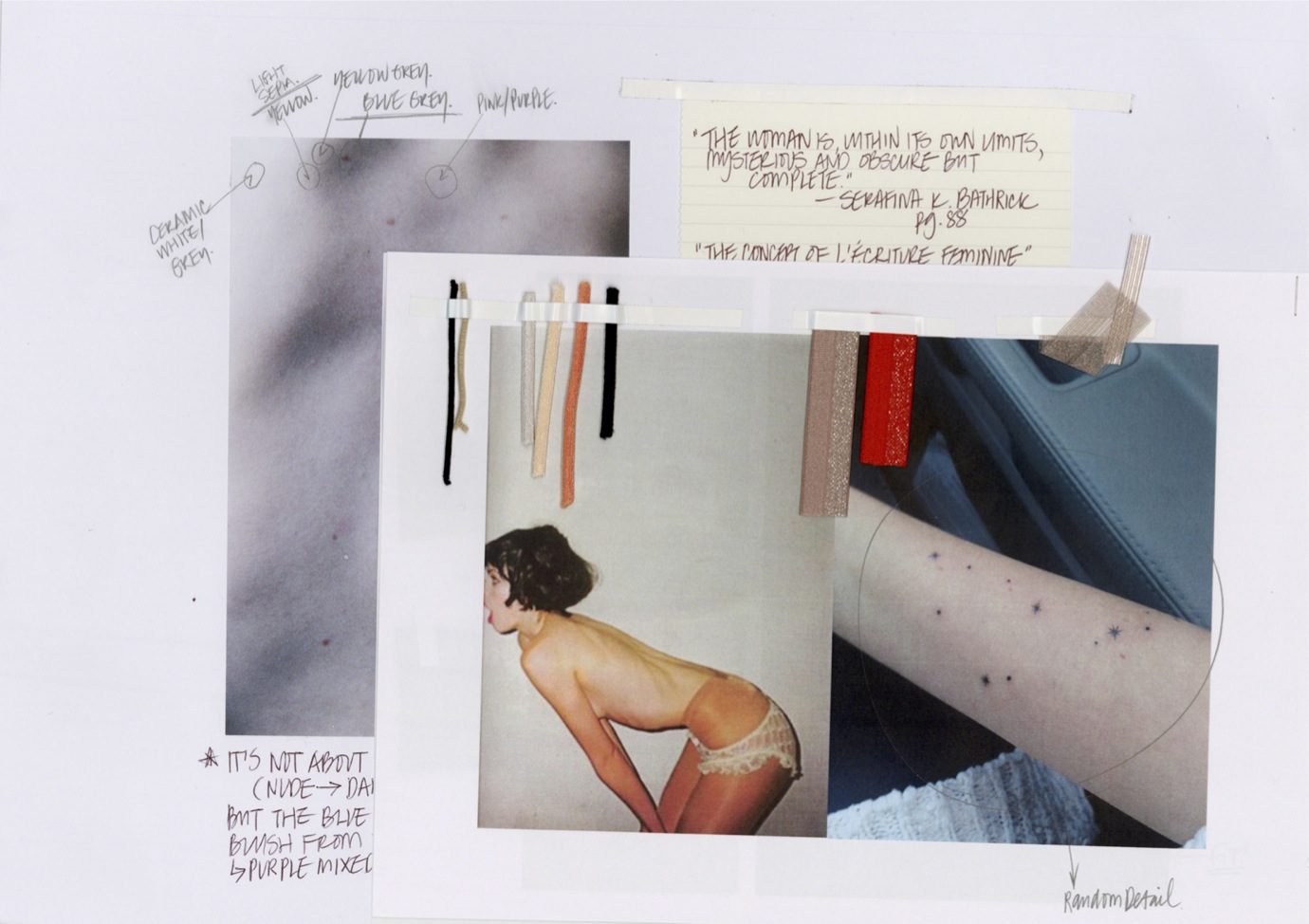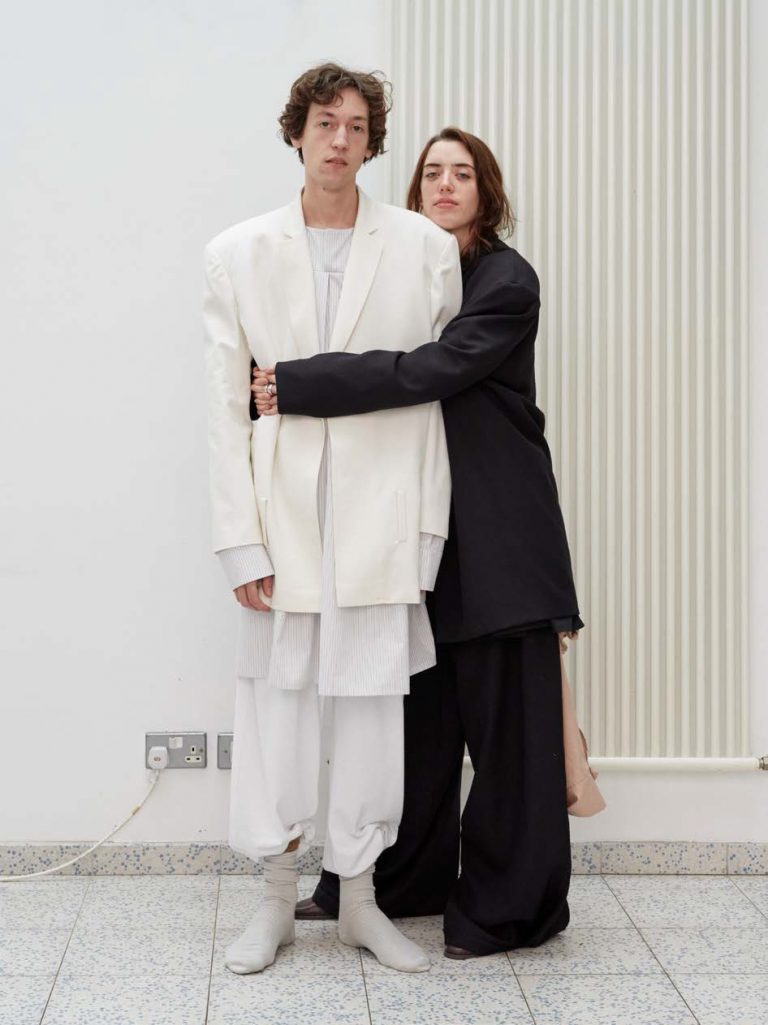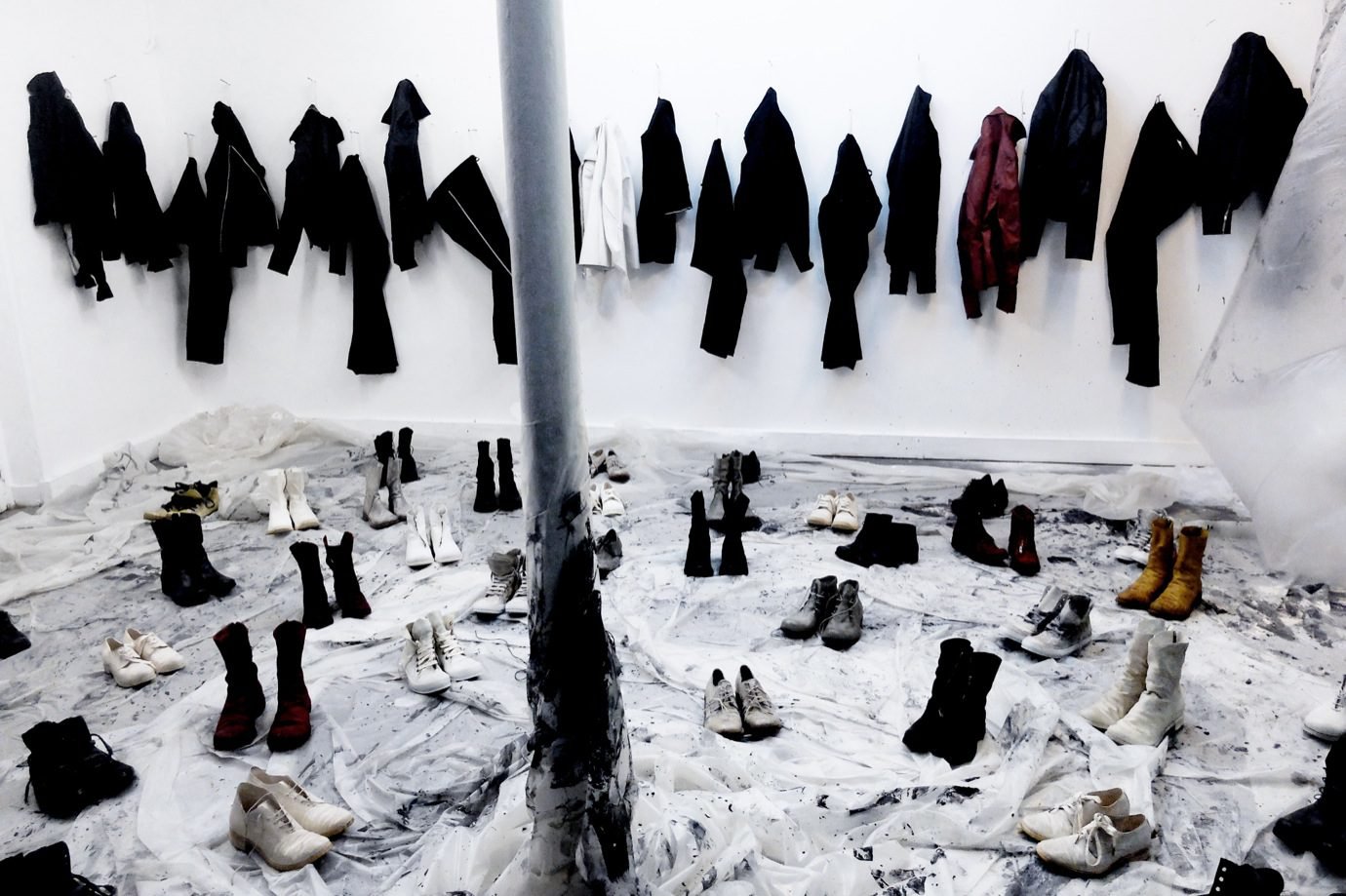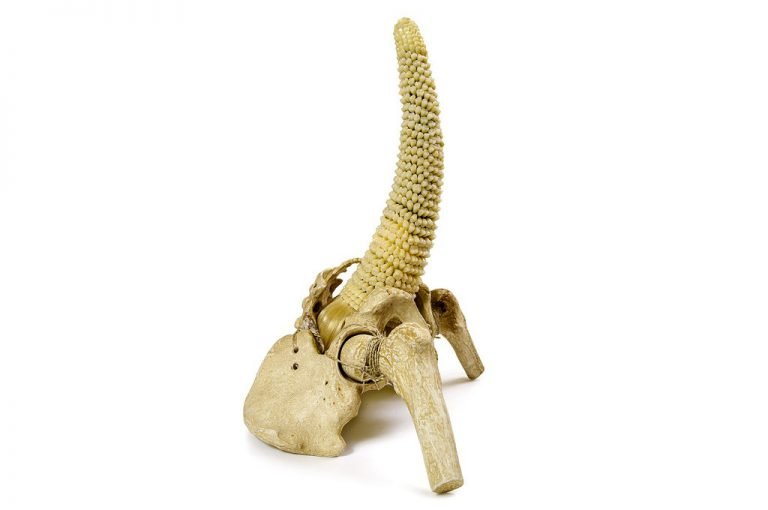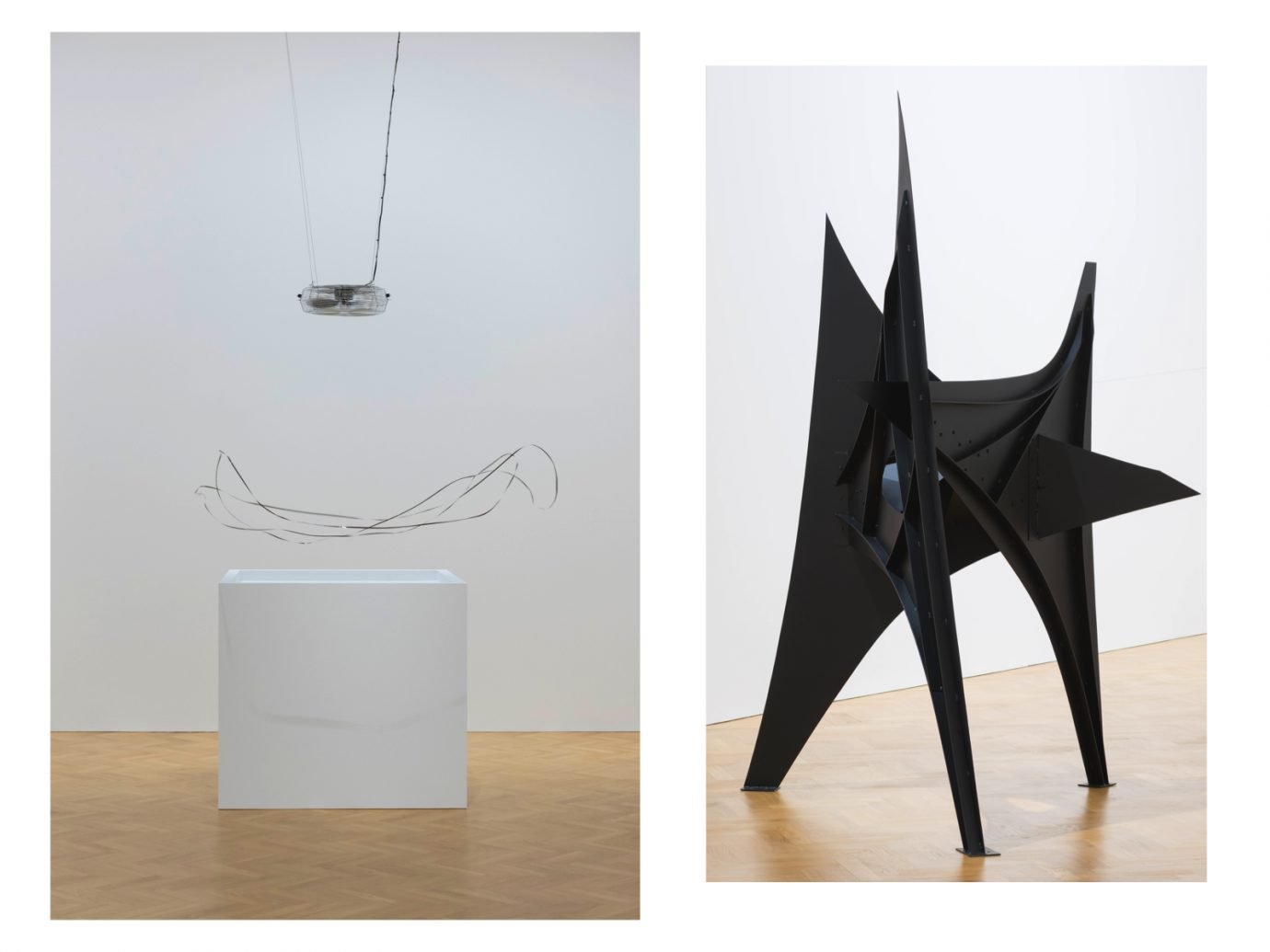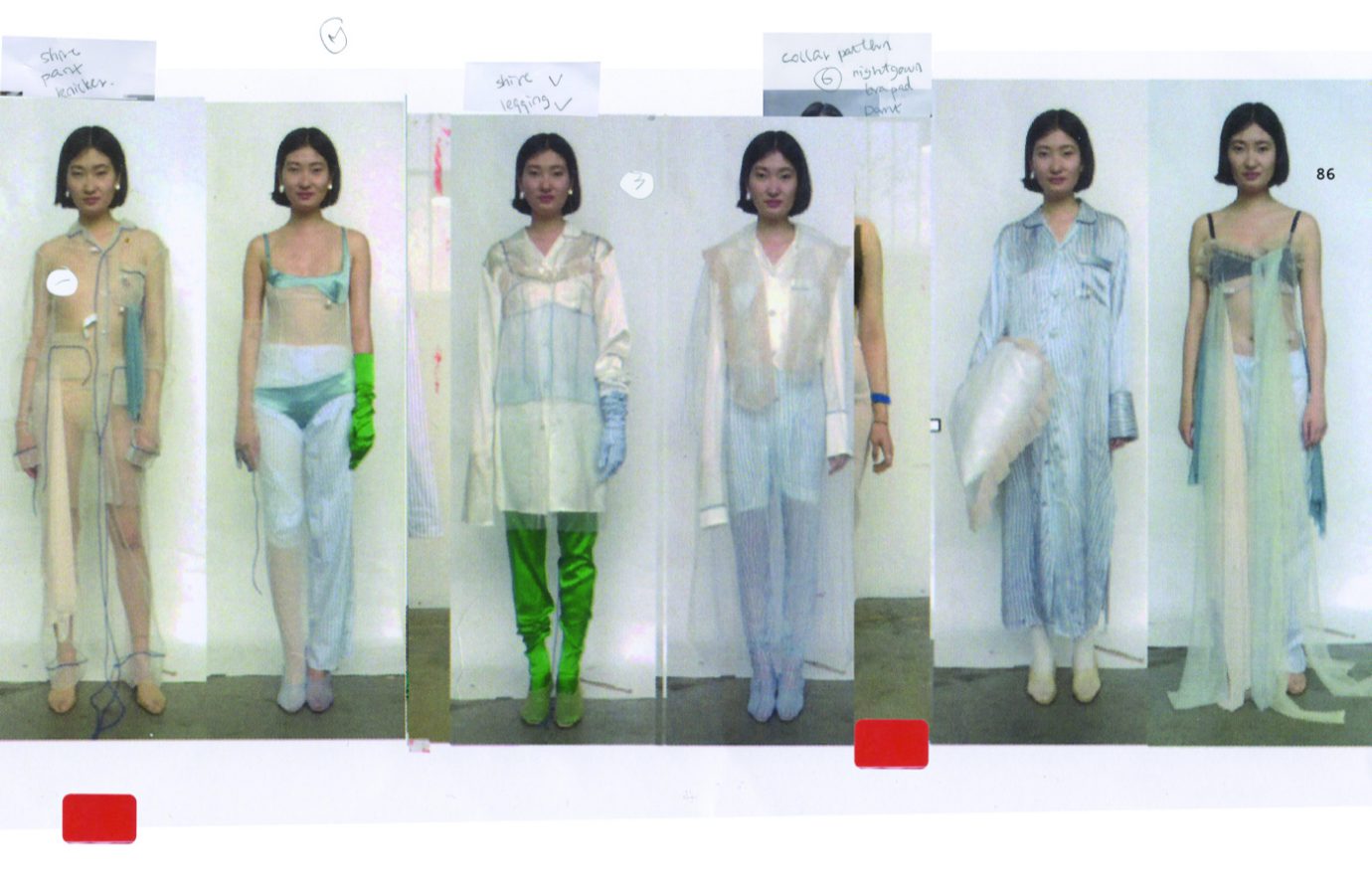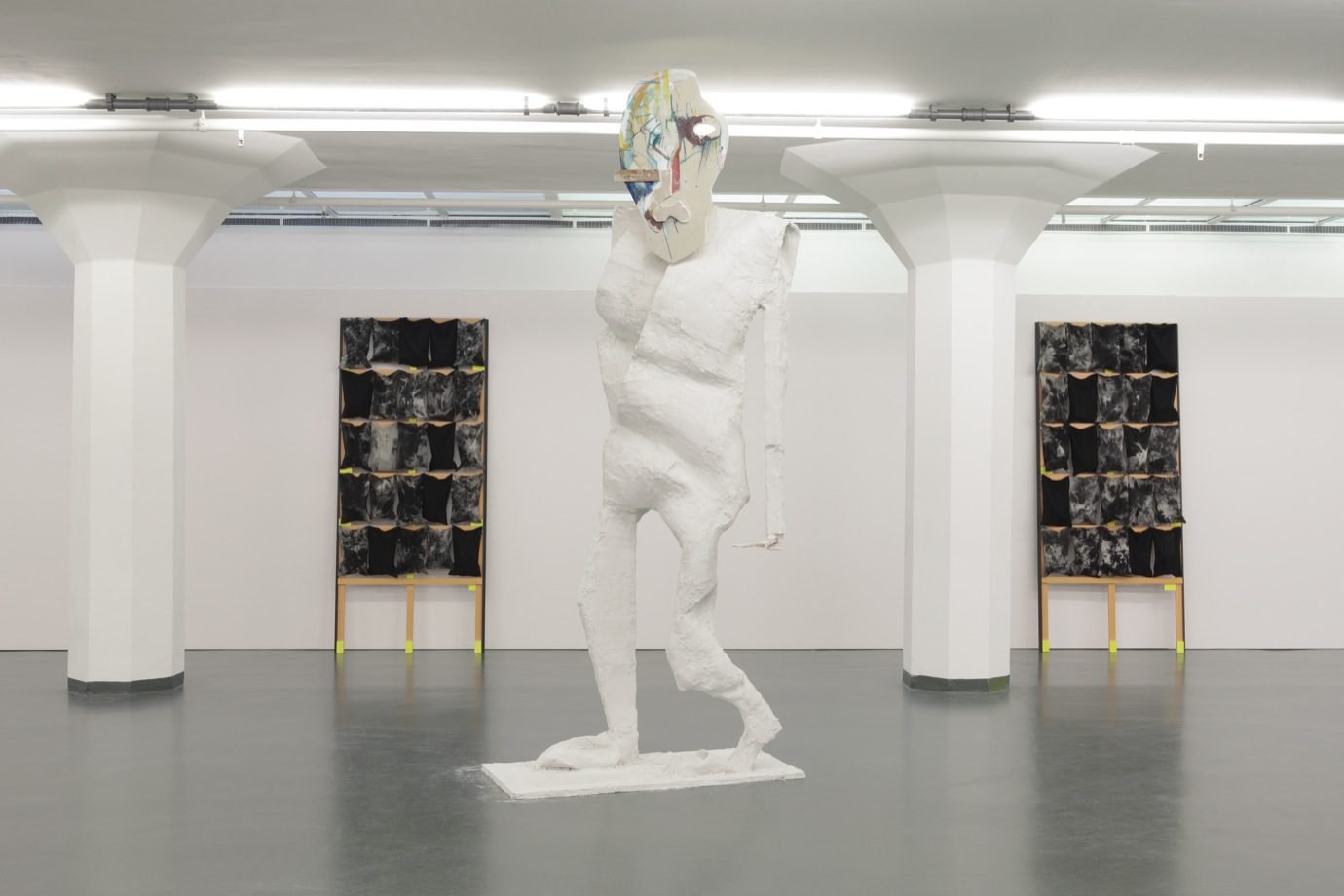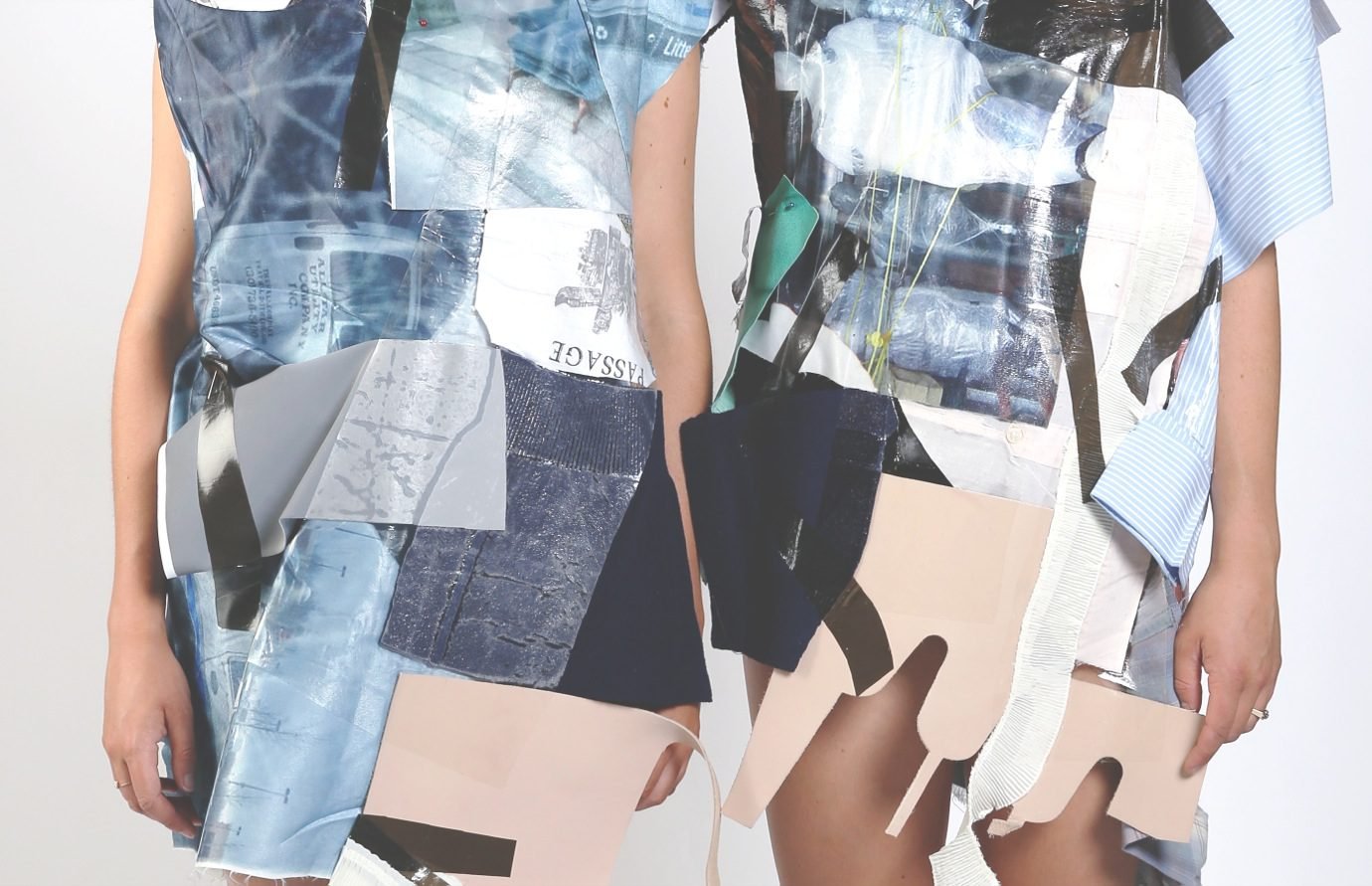Zarrella fiercely stands up for emerging talent, she always has done. During her time as an MA Fashion Journalism student, she earned her reputation by always coming into Louise Wilson’s office with requests. “Louise would be like: “Why are you doing this?”,” Zarrella laughs. “To spotlight a handful of designers, to be able to give them their moment!”
After leaving CSM and doing a variety of writing and editing stints at publications such as WWD, V Magazine and style.com, Zarrella founded her own platform Fashion Unfiltered last year. We got some insight into the knowledge she’s gathered throughout the years, and spoke about the wrong kind of press support for emerging designers (stemming from a wise advice by Carine Roitfeld), why not every brand should be entitled to a 600 word review (or entitled to staging a show in general), and essentials for journalists in 2017 – major one: keep your show notes safe from rabbits who will eat them.
“IF YOU DON’T BELIEVE IN WHAT YOU’RE WRITING, YOU SHOULDN’T BE WRITING IT. YOU SHOULD BE ABLE TO BE HONEST.”
You started your own thing after having worked for so many different platforms. Did you feel that something was missing?
Yes, there were a couple of reasons. First of all, I think there was a huge gap in the market. I think that most consumer-facing publications address fashion from a little bit of a flippant standpoint. I personally think that fashion is one of the most fascinating, complex and insane industries in the entire world. You have the corporate side and the artistic/design side, which are both really cut throat; you have the retail side; and it ties into politics, the economy, film, music. Fashion touches pretty much every single person who wears clothes, in one way or another. And I think that there is a consumer that wants to read about fashion in that kind of context. I think fashion should be treated as a topic of discussion, and when you go to a lot of the mainstream fashion publications – where consumers are going to get their fashion information – you see the same four stories. What is Kim [Kardashian] wearing to the airport, what is Kendall Jenner wearing outside of a fashion show, is she hanging out with Gigi Hadid? And what four products should you get at the drugstore? There’s so many fascinating stories within the fashion industry that need to be told, and I wanted to create a platform that really focused on that.
Where does the Unfiltered part come from? The word makes me think of a view of fashion that is not restricted by big brands and a place of true criticism.
First off, we’re fiercely independent, and I think that, again, a lot of consumer-facing publications are beholden to advertisers. There are amazing publications out there and there are amazing writers that I look up to, but I think that the majority of consumer-facing publications, and the stories that they publish, are a little bit watered down. There is not a lot of opinion, and I really feel if you don’t believe in what you’re writing, you shouldn’t be writing it. You should be able to be honest. If there was something in a fashion show that was really culturally out of line, or if there’s a company that is not making their clothes ethically, or if there’s something really absurd happening – we want to be able to write about it honestly and talk about why it struck certain chords with us. On the flipside, if you’re writing something positive about a collection, it means so much more if the reader knows that this opinion comes from an honest place, because you’re not just sugarcoating everything. It’s not daisies and rainbows. Journalistic integrity is what is most important for us. Our writers say what they think and I am really proud of that.
“YOU NEED TO HAVE A DIFFERENT POINT OF VIEW, AND YOU NEED TO HAVE A NICHE – NO MATTER HOW SMALL IT IS – THAT ISN’T BEING CATERED TO AT THE MOMENT.”
How would you start now, without having any contacts in the industry at all, just right of a fashion journalism course?
If we’re talking specifically about CSM students, then obviously you can get a lot of contacts through the school. I like to say that Central Saint Martins is kind of a fashion cult, and no matter how important somebody is – if you walk up to them and talk to them and be like: “Hey buddy, I also went to St Martins,” there is an instant connection. I interviewed Hussein Chalayan once. We were talking and it was kind of awkward, and I was like: “I went to Saint Martins,” and it was the best interview I ever did, because he totally opened up. So if you’re specifically talking about CSM: use the school as your resource. Reach out to people who you know are affiliated with the school; reach out to Katie Grand or whomever, because that’s a way to always get your foot in the door. Saint Martins aside, to be honest if I was young and I didn’t have any contacts or experience, I would just start writing. Get a platform up that is functional – it is the most important thing. You need to make sure you’re not doing something that already exists, like if you want to do the exact same stories as Vogue.com – there is no reason to have another Vogue.com or another BoF or WWD. You need to have a different point of view, and you need to have a niche – no matter how small it is – that isn’t being catered to at the moment. You know, fashion publishing, particularly online, is hugely overcrowded, but there is room for everyone, as long as everybody is doing something a little bit different.
What do you feel that within the fashion publishing industry are things that should be discussed more?
One of the things that needs to be talked about is where designers get money to do their lines. There’s lot of young designers, especially in New York, where there’s a lot of people who wonder: “Oh they’re so amazing, how did they become successful so quickly?” Well, they have a ton of money. You can’t do that overnight. I think people need to be a bit more transparent about where their business comes from. I think that because a designer is young, people assume that they have no money and they’re broke and they’re just out of school, but that’s not really the case. So it’s not really a viable business model for other young kids who want to get into the fashion industry, it’s not a reality for them to follow.
“EXPERIMENTAL DOESN’T NECESSARILY MEAN ‘NOT WEARABLE’, IT JUST MEANS THAT MAYBE THEY’RE NOT TRYING TO BE THE NEXT ALEXANDER WANG OR DKNY.”
New York has platforms like MADE Fashion Week, what else is out there?
Well, there’s a CFDA/Vogue Fashion Fund – which is great and it is very important to the New York fashion industry, but at times I think that a lot of people in the industry feel like it’s the usual suspects that get nominated. That is not to say that those people aren’t deserving, but they’re less inclined to take a risk with somebody who could be the next Christopher Kane or Alexander McQueen, if it doesn’t feel like it fits into a certain package. I think they’ve broken out of that mold with having Hood By Air, but at the same time they were pretty established when they got an ‘emerging menswear’ nomination. Same thing goes with Gypsy Sport, who were nominated for a Swarovski prize, I think that is unexpected. But I think that New York really needs to find a way to better support more experimental talents for the long term. Experimental doesn’t necessarily mean ‘not wearable’, it just means that maybe they’re not trying to be the next Alexander Wang or DKNY. They might want to do something that is on a different scale or meant for a different consumer, it doesn’t necessarily need to have mass appeal.
Do you keep close track of emerging talent as opposed to the bigger names?
Absolutely, it’s so important. Carine Roitfeld said to me once in an interview: “You can’t just do a story about an emerging talent and then forget about them. If you believe in them, you need to support them through the tough times and the good times. If there’s someone who has a lot of talent, and has the potential to make it in this crazy industry that we’re part of, they need the support of editors and journalists from the get-go, all the way through.” So there are definitely people that I follow very closely, that I’m very proud of.
Designers definitely deserve press and excitement in their first few seasons, but maybe be a little more conservative about it. There’s a lot of pressure on a young designer. They get a ton of press and everybody’s saying they’re the hot new thing – and fashion is all about the new, except for when it isn’t – but it’s a lot of pressure for a young designer when they’re thrown into the press cycle before they’re ready. I think that it’s great to support them, but maybe don’t put a ton of pressure on them in their first two seasons, because they might burn out. It’s a very delicate balance, because young designers need the press in order to get funding and retailers. But I think sometimes the press has these expectations of them that aren’t necessarily realistic; that can be very harming. It’s important to go slow and steady and not get wrapped up in the hype.
“YOU’RE ALL UP AT FIVE O’CLOCK IN THE MORNING, IN FOETAL POSITION ROCKING BACK AND FORTH, TRYING TO GET ALL THE STUFF DONE BEFORE THE FIRST SHOW AT 9AM.”
Just to touch on the shows – let’s consider the idea of fashion ‘reality’. I spoke with Sally Singer for a piece we did on Nicole Phelps, and she told me how during fashion week, the filing system at style.com was really be something to behold. Of course you get so many stories that are framed like “this is what the life of a fashion editor is like during fashion week”, but do you feel that when you’re reading those pieces it actually reflects what people do?
No! Absolutely not in a million years. In those stories, it’s about “these are the products that are in my bag! I go to this and that show,” but the real reality of fashion week… Here was my fashion week when we launched: everyone lived in my apartment on the floor – it was pretty gross, there were diet coke cans and empty coffee cups everywhere. You couldn’t even see the table top or the floor. No one had slept, no one showers, everyone is so exhausted, and it’s so much fun. I love it, I live for it. But it is the least chic glamorous thing, and everyone who’s writing and says that’s not how it happens, is lying. Because everyone stays up all night. The bed always get covered with show notes. Show notes become my comforter. I have two rabbits who eat the show notes, which is really problematic for me. It’s hysterical. It’s total insanity, but it’s also such a rush. It also fosters a bonding between the team, because you’re all up at five o’clock in the morning, in foetal position rocking back and forth, trying to get all the stuff done before the first show at 9am. It just becomes really hilarious, but at the same time everyone is working their asses off and they’re very passionate. We wouldn’t be putting in all of these crazy hours and, you know, risking our health to do this otherwise.
How do you feel you’re actually staying clear sighted when you’re not sleeping and you’re writing reviews that come from opinion and criticism. Without sleep – how do you function in that sense?
You know what? It’s really difficult. It’s really hard to write something intelligent and informed when you’re exhausted, but at the same time, that’s when you write some of your best stuff. It’s also important to face yourself: yes, everyone wants to have their review out before everyone else. Our approach to fashion week – which we implemented in our first season – is to do very short recaps each show. A couple of sentences about what happened at the show, and then the following morning you have more of an in-depth report of what went on; putting it into a cultural perspective; a fashion-historical perspective, and a seasonal perspective. I think that makes more sense for our reader, who wants to understand things as a whole. They can still get the goods right after the show and look through all the images, and then if somebody wants to read something a little more in-depth, they can do that in the daily report. I don’t think that every brand necessarily needs to have a 600 word review. It’s great for the designer, for sure, but Vogue does runway reviews, Nicole Phelps is the best in the business, and what Tim [Blanks] does at the Business of Fashion is great. You don’t need to do the exact same thing. We can do things a little bit differently.
“NOT EVERYBODY WHO DESIGNS A T-SHIRT SHOULD HAVE A RUNWAY SHOW.”
How do you actually decide which shows to attend?
We look at all the schedules well in advance and we talk about it. We know which shows are important to our readers, we know which designers we are excited about and want to report on. We fuse those lists and those are the shows that we cover. It’s not feasible to cover everything. It’s outrageous, and I think that the majority of the shows that happen, shouldn’t be shows. They should be showroom appointments before or after, or in-between. Not everybody who designs a t-shirt should have a runway show. Everybody needs to calm down. It’s getting a little out of control.
Just to get back to the practicals of journalism – what are the essentials for journalists starting out now? From my experience, it’s not just about knowing how to write a piece, it’s understanding headlines, or things like SEO.
If you’re talking specifically about online, yes, knowing SEO… But also doing headlines in a way that’s not so cheesy. Some of the headlines are so transparent, I just can’t. There’s a way to do it where you’re SEO-friendly, but you don’t sound like a fifteen-year-old robot saying: “Here’s 5 ways to make a ponytail.” I don’t know why I’d read that. There’s a way to have your keywords in your headline, but still in a way that’s really fun. Amber, our beauty director, is the genius of that. She has the best headlines. And we love a pun, which is difficult with SEO. SEO killed the pun-headline, which makes me very sad. But I still believe that puns aren’t dead, and we can make them happen in our headlines – just think about it a little bit.
SEO is really important, but at the end of the day, the most important things are still going to be: know your subject, check your facts, don’t make shit up, make sure that you know what you’re talking about, and be able to tell a story. Whether you are writing something that is 200 words or that’s 2000 words, for online or print, there needs to be a story there that’s going to grab the reader. That’s the most important thing. Know your history – whether that is fashion history or what other thing you are writing about; and have something to say. And also: do SEO headlines!

